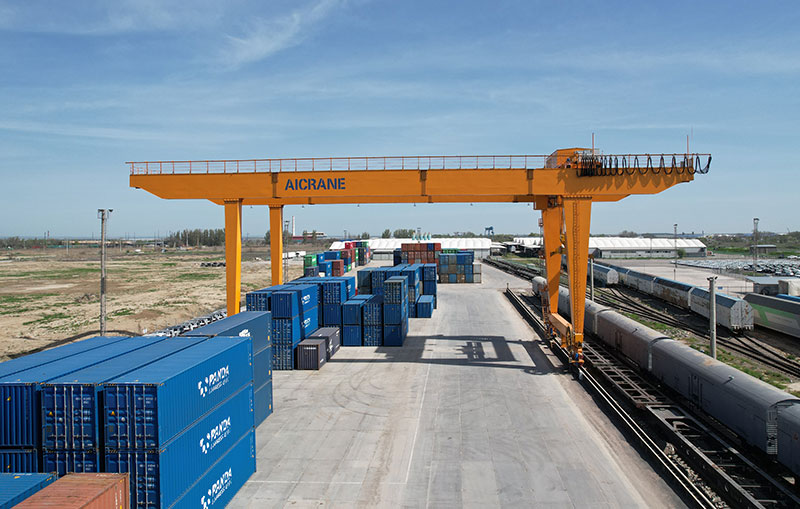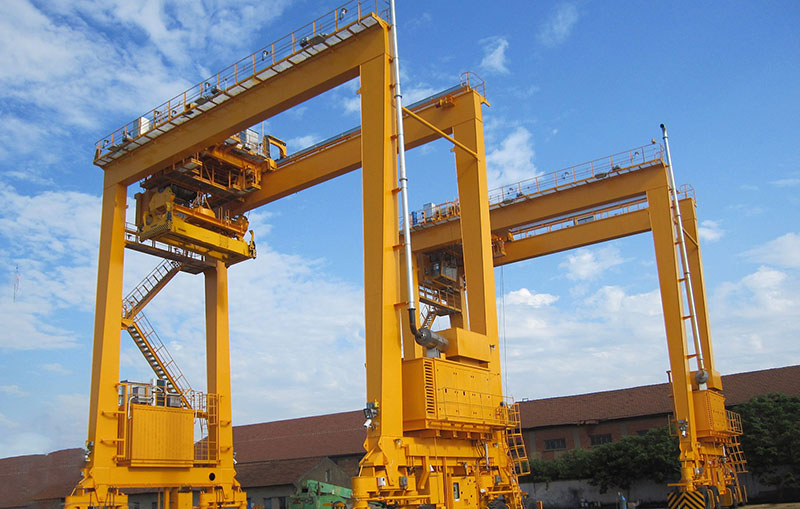Container gantry cranes – the heavy lifters of container terminals, yards and ports – sit at the intersection of global trade flows, port modernization programs and industrial automation. Over the last five years the market for these cranes (including RTGs, RMGs and ship-to-shore gantry cranes) has been shaped by three big forces: rising containerization and megaship sizes, a push toward automation and sustainability, and shifting supply-chain/regional sourcing dynamics. Below I unpack those trends, explain what’s driving demand regionally, and highlight the practical implications for crane manufacturers, terminal operators and logistics planners.

Market size and growth outlook
Multiple market reports published in 2024–2025 show the broader port/yard-crane landscape growing steadily. Estimates vary by segment and scope, but port- and yard-crane markets are generally projected to grow at low- to mid-single-digit CAGRs through the late 2020s and into the early 2030s. Recent consolidated figures put the “port gantry cranes” or “yard cranes” market in the roughly USD 1.0–1.9 billion range in the mid-2020s with expected expansion driven by terminal modernization and container throughput increases.
What that means: demand is stable and growing – not explosive – but the growth is concentrated in specific upgrade and automation projects rather than broad-based replacement cycles. Manufacturers should expect steady orders with peaks tied to major port investments.
Demand drivers: bigger ships, higher throughput, and terminal densification
Ultra Large Container Vessels (ULCVs) and growing container volumes are pressuring terminals to increase crane productivity (faster cycles, higher lift capacities, and longer outreach). This has driven demand for higher-capacity equipment (>100-ton lifting classes for some ship-to-shore cranes) and more precise positioning systems so terminals can load/unload faster and reduce vessel turnaround time. Grand View Research and other analysts note that equipment for mega-ports dominates demand for high-capacity gear.
Terminal densification – narrower aisles and taller stacks – also increases interest in rail mounted gantry (RMG) solutions in locations where electrified, high-throughput, energy-efficient systems are prioritized. Conversely, sites valuing flexibility continue to favor rubber-tyred gantry (RTG) cranes. The upshot: the market isn’t “one-size-fits-all” – capacity, yard layout and energy strategy drive product choices.
Automation and digitalization: the new baseline
Automation is the single most transformative technological trend. Ports are investing in remote- and semi-automated gantry cranes, digital twins, machine vision for container ID/pose detection, and predictive-maintenance platforms that reduce downtime. The automated container terminal market is one of the fastest-growing adjacent markets, and that investment naturally lifts demand for crane retrofits and OEM-supplied automated systems.
However, automation is politically and socially sensitive: labor negotiations – especially in places like the U.S. – have put automation into the spotlight and occasionally slowed or complicated deployments. Major news coverage in 2024-2025 showed labor talks and disputes that directly referenced automation’s impact on job roles at ports, underlining the need for careful change management when introducing automated cranes.

Electrification and sustainability: green ports drive new demand profiles
Environmental regulations and “green port” initiatives are pushing terminals toward electrified cranes (shore-power compatible, hybrid or fully electric RTGs/RMGs) to cut diesel emissions and noise. This trend raises demand for new container crane types and retrofits that can support battery systems, shore power connectors and energy-recovery technologies. Adoption is fastest in Europe and parts of Asia where emissions standards and public pressure are strongest; incentives and grants for low-emission equipment further accelerate procurement. Market reports point to hybrid/electric solutions as a fast-growing subsegment.
Regional patterns: who’s buying what where
-
Asia-Pacific remains the largest market by volume – China, Singapore and Southeast Asian transshipment hubs continue to invest heavily in port expansion and automation. Many gateway ports here focus on capacity and automation to handle ULCVs.
-
Europe has seen a surge in RMG orders driven by electrification and a move toward regional sourcing; European OEMs are capturing more local projects. Recent reporting shows a production shift away from some Chinese OEM dominance toward regional manufacturers for certain European projects.
-
Middle East & Africa investments are concentrated in strategic transshipment hubs (e.g., UAE) and new deepwater ports; demand tends toward large-capacity ship-to-shore and yard cranes.
-
Americas are a mixed picture – investment in automation meets stronger union scrutiny in the U.S., while many Latin American ports invest selectively to modernize key gateways. News coverage of labor/automation tensions shows procurement timelines and adoption strategies can be politically influenced.
Product mix shifts: RTG vs RMG vs STS
RTGs still dominate volume-sensitive yard markets because of flexibility and lower initial infrastructure needs; some reports estimated RTG crane share above 60% of yard crane deliveries in recent years. But RMGs are gaining where energy efficiency, electric operation and high throughput matter – especially in Europe and electrified terminals. Ship-to-shore (STS) crane demand is tied closely to terminal investments for berth upgrades and ULCV calls.
Supply-chain and OEM dynamics
Supply chains, tariffs, and regional sourcing strategies have reshaped where terminals buy. Analysts and industry reporting show a “sea change” with more regional OEM wins in Europe and diversification away from single-source suppliers. That creates opportunities for mid-size and regional manufacturers to capture retrofit and new-build orders – particularly when they can offer local service and compliance with regional sustainability standards.
Risks, headwinds and what buyers should watch
-
Labor and political resistance to automation – may delay projects or require phased approaches.
-
Capital cycles and container-volume volatility – orders tend to cluster around new terminal projects; downturns in global trade can depress near-term demand.
-
Technological integration challenges – integrating digital systems across legacy equipment remains a practical obstacle for many operators.
-
Regulatory pressures – emissions rules can accelerate capital replacement but also raise capex needs.
Practical takeaways for stakeholders
-
Terminal operators should balance short-term throughput gains with long-term operational costs: electrification and automation reduce operating expense but require upfront investment and workforce transition plans.
-
OEMs and suppliers need modular, retrofit-capable offerings (digital upgrades, hybrid power packs) and strong local service footprints to win in regional sourcing markets.
-
Investors and planners should watch port master plans and national infrastructure spending – these remain the clearest signals for where large crane orders will appear.
Conclusion
Demand for container gantry cranes is maturing into a more sophisticated, targeted market: steady growth driven by automation, electrification, and the need to handle ever-larger ships. Regional differences, labor dynamics and supply-chain realignments mean the “who buys what” equation will continue to diverge by geography. For manufacturers the winners will be those who combine reliable hardware with digital services, retrofit-friendly designs and localized support – while terminals will need to pair technology investments with social and workforce strategies to make modernization stick.
